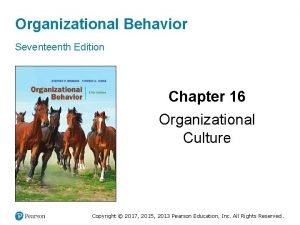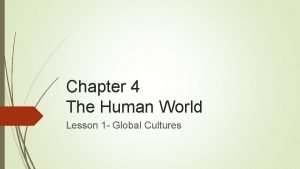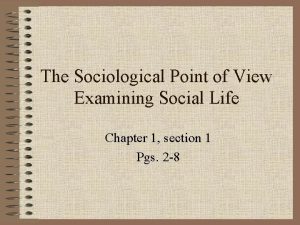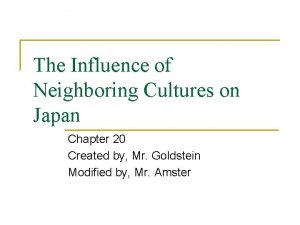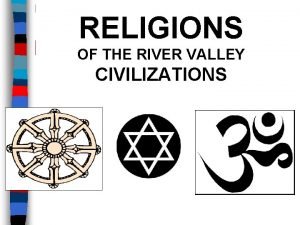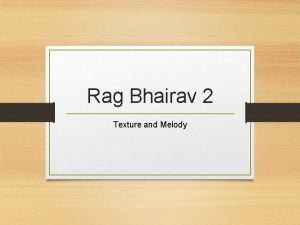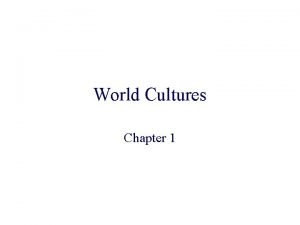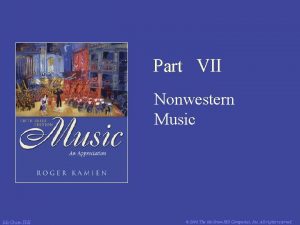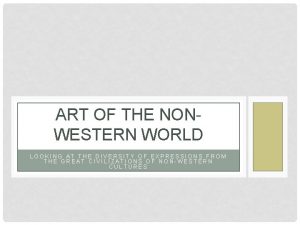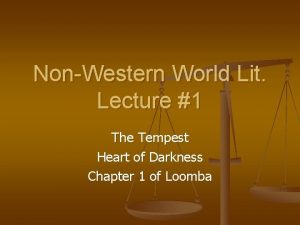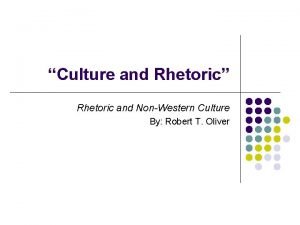WORLD MUSIC Music from nonWestern Cultures SITAR TAMPURA
















- Slides: 16

WORLD MUSIC Music from non-Western Cultures

SITAR

TAMPURA

SAROD

TABLA

SHEHNAI


HARMONIUM

MELODY IN INDIAN MUSIC Traditional Indian music is generally melodic, though it is known for a heavy use of drones to fill in the space behind the melody. Traditional Indian melodies are called Ragas differ between Carnatic music and Hindustani music (South and North India respectively). Most Indian music is identifiable by its use of semitone motion in melody.

INDIAN HARMONY As previously mentioned, Indian music is heavily reliant on melody. Harmony is provided though a harmonic resonance field, called a drone. Instruments such as the tampura or the harmonium fill this field. Similar to the Western “Do Re Me Fa So La Ti Do”, Indian music utilizes a diatonic scale. In India, the degrees (Swara or Solfège) are “Sa, Ri, Ga, Ma, Pa, Da, Ni, Sa”. The drones that fill the space behind the melody is based on the “Sa” degree. In a Western perspective, it`s like having the root chord always being played in the background. Indian music does not utilize the Western idea of Harmony, so it would be pointless to look for a Western style harmony in Indian music.

SMALLER THAN SEMITONES Indian music incorporates tones called śruti. Śruti is a way of utilizing microtones, tones smaller than semitones. Many instruments from around the world can achieve this. In Western notation, we might look at it like this:

AN EXAMPLE OF INDIAN NOTATION

AN EXAMPLE OF INDIAN NOTATION

TALA Tala is the way of measuring meter in Indian music. Different types of talas have different numbers of beats, and these beats can be counted in a number of different ways. However, the most common tala is known as Teental, which has four measures with four beats each.

CONTEXT OF INDIAN MUSIC Hindustani classical music has roots in Northern and Eastern India. It originated in Vedic ritual chants, and has been evolving since approximately the 12 th century. It allows for time to develop the raga and for the musicians to improvise. It is more melodic, and the moods (rasa) are more personal. Carnatic music began to flourish in the Southern areas of India in the 16 th century. It is more rhythmic, and is mostly devotional, praising divinity.

LINKS FOR LISTENING Ravi Shankar playing Bhimpalasi (Hindustani) Anoushka Shankar - Indian Classical Raga Bhairavi (Carnatic) Vēṇu Sitar
 Organizational cultures often reflect national culture.
Organizational cultures often reflect national culture. Visor infogis aragón incendios
Visor infogis aragón incendios Alex sitar
Alex sitar Online music portfolio
Online music portfolio Lesson 1 global cultures
Lesson 1 global cultures Subcultures
Subcultures Which cultures believe in reincarnation
Which cultures believe in reincarnation What is sociology perspective
What is sociology perspective The influence of neighboring cultures on japan
The influence of neighboring cultures on japan Judaism founder
Judaism founder River valley civilizations religion
River valley civilizations religion Religion
Religion Adrian holliday small cultures
Adrian holliday small cultures Taste different cultures
Taste different cultures What is culture
What is culture Characteristics of collectivism
Characteristics of collectivism Personal sense of identity
Personal sense of identity
